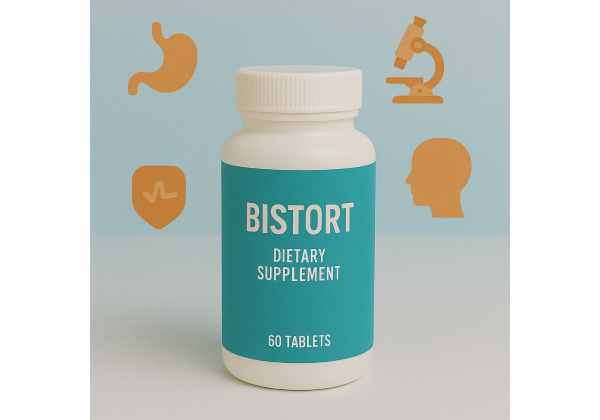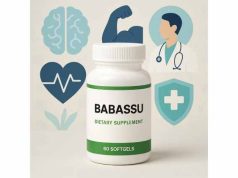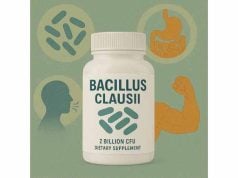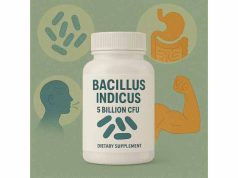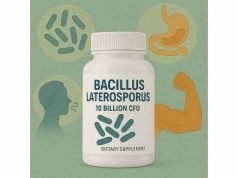Bistort, known botanically as Polygonum bistorta or Persicaria bistorta, is a perennial herb revered in herbal medicine for its powerful astringent, anti-inflammatory, and wound-healing properties. With a long history in European, Asian, and Native American traditions, bistort root and leaves have been used to ease digestive issues, stop minor bleeding, soothe sore throats, and support overall gut health. Today, bistort is gaining attention as a gentle yet effective natural supplement for diarrhea, oral health, and inflammation. Whether in tea, tincture, or powder form, bistort offers a unique profile of tannins and antioxidants that contribute to its broad wellness benefits. This guide explores everything you need to know about bistort’s uses, scientific effects, dosage, and safety.
Key Takeaways
- Bistort is valued for its high tannin content, offering strong astringent and soothing effects for digestion, bleeding, and mucous membrane health.
- Traditional and modern uses include relief of diarrhea, sore throat, gum problems, and wound care.
- Its anti-inflammatory and antioxidant actions make bistort useful for calming irritation, swelling, and supporting overall gut and oral health.
- Bistort is generally safe in moderation, but excessive or long-term use can cause side effects due to its high tannin levels.
- Always consult a healthcare professional before using bistort supplements, especially if pregnant, breastfeeding, or taking medications.
Table of Contents
- Bistort Herb Overview: Identity, Traditional Uses, and Modern Applications
- Bistort’s Biological Actions: Active Compounds and Scientific Insights
- Proven Benefits and Evidence-Based Applications of Bistort Supplementation
- Bistort Safety Profile: Possible Side Effects and Drug Interactions
- Bistort Dosage Guidance: Forms, Optimal Use, and Administration Tips
- Bistort FAQ: Frequently Asked Questions and Quick Answers
Bistort Herb Overview: Identity, Traditional Uses, and Modern Applications
Bistort, sometimes called “snake-root” or “English serpentary,” is a hardy, flowering plant found across damp meadows and riverbanks in Europe and parts of Asia and North America. Its botanical name, Polygonum bistorta, reflects its twisted root (“bis-torta” meaning twice-twisted) that stores many of the plant’s active constituents. The herb features a tall, pink-flowered spike and broad, oval leaves.
Traditional and Folk Uses:
- Europe: For centuries, bistort root was a staple in European herbal medicine cabinets. Healers and apothecaries used it as a primary remedy for diarrhea, dysentery, mouth ulcers, and minor bleeding.
- Asia: In Chinese and Tibetan medicine, bistort is used to “clear heat,” stop bleeding, and treat wounds or chronic gut problems.
- Native American: Indigenous North American tribes made poultices from bistort root to treat cuts, sores, and inflammation.
Parts Used and Preparation:
- The rhizome (underground stem/root) is the most commonly used part, harvested in early spring or autumn, then dried for later use.
- Leaves are sometimes consumed as cooked greens (“Easter giant” or “Passion dock”) in certain European traditions.
Modern Applications:
- Gut health: Bistort is frequently recommended by herbalists for mild diarrhea, irritable bowel, or as a gut-soothing tea.
- Oral and throat care: Bistort tea or diluted tincture is used as a mouthwash for sore gums, canker sores, and minor throat irritations.
- Skin and wound healing: Poultices or compresses may speed the healing of minor cuts, bruises, and insect bites.
- Menstrual support: The herb’s astringency may help manage excessive menstrual flow, though it should be used cautiously for this purpose.
What makes bistort unique?
- Its high tannin content sets it apart as a strong astringent, helping to “tone” tissues, reduce secretions, and limit irritation or bleeding.
- Bistort’s gentle action makes it suitable for both children and adults when used as directed.
Who typically uses bistort?
- People seeking natural alternatives for occasional digestive distress
- Those looking for gentle, plant-based relief for sore mouth or gums
- Individuals with minor wounds or in need of a soothing topical remedy
- Herbal enthusiasts wanting to broaden their home apothecary
Summary:
Bistort is a time-honored, versatile herb, prized for its astringent, anti-inflammatory, and wound-healing properties. Its applications span digestive, oral, skin, and women’s health, making it a valued supplement in both traditional and modern wellness routines.
Bistort’s Biological Actions: Active Compounds and Scientific Insights
The therapeutic value of bistort comes from a robust mix of plant chemicals, with tannins being the star ingredient. By understanding how these compounds interact in the body, we see why bistort is so effective for tissue toning, inflammation reduction, and overall healing.
Main Active Components:
- Tannins (15–25%): These polyphenolic compounds give bistort its astringency. Tannins bind to proteins on mucous membranes and wounds, creating a protective layer that reduces irritation, inflammation, and fluid loss.
- Gallic acid and ellagic acid: Potent antioxidants that help neutralize free radicals, contributing to bistort’s anti-inflammatory and tissue-protective actions.
- Flavonoids: Provide further antioxidant activity, supporting immune and vascular health.
- Starch and mucilage: These soothing polysaccharides can help coat and calm inflamed tissues, particularly in the digestive tract and throat.
- Resins and mineral salts: Add to bistort’s healing and nutritive profile.
How Bistort Works in the Body:
- Astringent effect: Tannins “shrink” tissues, helping control diarrhea by reducing excess secretions and tightening the gut lining. This same action aids in stopping minor bleeding (hemostatic effect) and closing wounds.
- Anti-inflammatory action: By inhibiting inflammatory mediators and oxidative stress, bistort calms irritation both internally (gut, mouth) and externally (skin).
- Antimicrobial support: Some studies suggest bistort extracts can inhibit the growth of certain bacteria and fungi, which helps explain its use in oral and wound care.
- Antioxidant defense: The plant’s polyphenols and flavonoids protect cells from damage, supporting long-term tissue health and reducing chronic inflammation.
Scientific Insights and Modern Research:
- Laboratory research confirms bistort’s tannin-rich extracts have strong astringent and antimicrobial effects, supporting its use for diarrhea, gum disease, and minor skin issues.
- Animal studies have demonstrated bistort’s ability to reduce gut inflammation and support faster healing after tissue injury.
- Clinical studies in humans are limited but suggest benefit for diarrhea, mild oral conditions, and wound healing.
Cautions Regarding Tannins:
- While tannins are the main source of bistort’s power, excessive intake can interfere with the absorption of minerals like iron and may cause constipation or gut upset if overused.
Summary:
Bistort’s effectiveness comes from its synergy of tannins, antioxidants, and soothing compounds, making it a trusted herbal solution for a variety of inflammation and irritation-related concerns.
Proven Benefits and Evidence-Based Applications of Bistort Supplementation
Bistort’s long tradition as a medicinal herb is matched by a growing body of evidence supporting its diverse benefits. Let’s explore the best-researched uses, and what you can realistically expect from adding bistort to your wellness toolkit.
1. Diarrhea and Digestive Support
- Bistort’s astringent action makes it a go-to remedy for mild to moderate diarrhea, particularly where inflammation or excessive gut secretions are the cause.
- Its mucilage soothes irritated tissues, reducing discomfort and aiding recovery after gut upsets.
2. Sore Throat, Mouth, and Gum Relief
- Bistort tea or diluted tincture can be swished or gargled to ease mouth ulcers, sore throats, bleeding gums, and inflamed tonsils.
- Its antimicrobial activity supports oral hygiene and speeds the healing of minor oral irritations.
3. Wound and Skin Healing
- Applied topically, bistort compresses help stop bleeding, reduce swelling, and promote the healing of cuts, scrapes, and insect bites.
- Its tissue-tightening properties speed recovery and minimize infection risk.
4. Menstrual and Women’s Health Support
- Bistort has been used traditionally to help manage heavy menstrual bleeding due to its astringent effects. However, modern users should approach this use cautiously and always consult a healthcare provider first.
5. Anti-inflammatory and Antioxidant Protection
- The antioxidant compounds in bistort help fight free radicals, reduce inflammation, and support immune health, offering broad protective effects for cells and tissues.
6. Other Emerging Uses
- Some herbalists use bistort as part of protocols for irritable bowel syndrome (IBS), hemorrhoids, or varicose veins, capitalizing on its tissue-toning and anti-inflammatory qualities.
- As a mild tonic, bistort may support resilience during periods of physical stress or recovery.
Who Benefits Most from Bistort?
- Individuals seeking natural support for occasional digestive or oral complaints
- Those recovering from minor wounds or needing gentle skin care
- People looking for a plant-based, traditional astringent for various inflammation issues
Limitations and What to Expect
- Bistort is not a substitute for medical treatment in severe diarrhea, infection, or heavy bleeding.
- Its effects are gentle and best suited for mild to moderate symptoms or as part of a broader health plan.
Summary:
Bistort’s range of evidence-backed applications—digestive, oral, skin, and more—make it a flexible and valuable herbal supplement for anyone interested in natural wellness solutions.
Bistort Safety Profile: Possible Side Effects and Drug Interactions
Bistort is widely considered a gentle, safe herb for most adults when used in recommended amounts and for short durations. However, like any supplement with active botanical compounds, it’s important to be aware of its potential side effects, tolerability in specific populations, and how it may interact with medications or underlying health conditions.
Understanding Bistort’s Safety: Who Should Use Caution?
- Pregnant or breastfeeding women: There is insufficient safety data regarding the use of bistort during pregnancy or while nursing. Due to its astringent and uterine-stimulating properties, it should be avoided or used only under the guidance of a qualified healthcare professional.
- Children: While small amounts of bistort tea have been given to children for mild diarrhea in traditional settings, concentrated extracts and long-term use are not recommended without pediatric advice.
- Chronic conditions: Individuals with kidney or liver disorders, a history of constipation, or gastrointestinal obstructions should use bistort with caution due to its strong astringent effect and tannin content.
Potential Side Effects of Bistort
- Constipation: Bistort’s astringency may cause or worsen constipation, especially with high or prolonged intake.
- Digestive upset: Some users may experience stomach discomfort, nausea, or cramping, particularly if sensitive to tannins or using the herb in concentrated doses.
- Reduced mineral absorption: High levels of tannins can interfere with the body’s ability to absorb certain minerals—especially iron—when bistort is used excessively or for extended periods.
- Allergic reactions: Although rare, some people may develop skin rashes or other allergic symptoms. Discontinue use and seek medical advice if any signs of hypersensitivity occur.
- Potential toxicity: Extremely large doses over time may lead to toxicity due to the accumulation of tannins, with symptoms such as liver irritation, dark urine, or fatigue.
Drug and Supplement Interactions
- Iron supplements: Tannins can bind to and decrease the absorption of iron from both food and supplements. If you are taking iron for anemia or other reasons, separate the timing of bistort and iron supplementation by at least 2–3 hours.
- Other astringent or tannin-rich herbs: Using bistort alongside other strong astringents (like oak bark or witch hazel) may compound the effects and increase the risk of constipation or digestive upset.
- Medications for constipation or bowel movement: Bistort may counteract the effect of these medications due to its tissue-tightening properties.
- Anticoagulant drugs: Because bistort has mild hemostatic (bleeding-reducing) effects, it could theoretically interact with blood-thinning medications, though clinical evidence is lacking. Use caution and consult a healthcare provider.
How to Minimize Side Effects
- Use the lowest effective dose: Start with a low amount and increase only if necessary.
- Limit duration of use: Avoid using bistort for longer than 2–3 weeks at a time unless under professional supervision.
- Stay hydrated: Adequate fluid intake helps counteract the drying effect of astringent herbs and may reduce the risk of constipation.
- Monitor for symptoms: If you notice changes in digestion, bowel habits, skin, or energy levels, stop using bistort and consult a healthcare provider.
- Combine with a balanced diet: Eating a variety of nutrient-rich foods, especially those high in iron and vitamin C, can help offset any mild absorption issues.
Is Bistort Addictive or Habit-Forming?
- No, bistort does not cause dependence or withdrawal symptoms. However, relying on it for chronic digestive or bleeding issues may mask underlying medical problems, so always seek a proper diagnosis for ongoing symptoms.
Summary:
When used properly and for appropriate indications, bistort is a safe, effective herbal remedy for most adults. Proper dosing, short-term use, and awareness of its drying effects are key to maximizing benefit and minimizing risk.
Bistort Dosage Guidance: Forms, Optimal Use, and Administration Tips
Optimal results with bistort require selecting the right form, adhering to time-tested dosage guidelines, and following smart practices for safe and effective use. Bistort is available as dried root, powdered extracts, tinctures, teas, and topical preparations. Each has unique benefits and considerations.
Forms of Bistort and Common Dosages
- Dried root (tea or decoction): The classic preparation, made by simmering 1–2 teaspoons of chopped bistort root in a cup of water for 10–15 minutes. Drink up to three times daily for acute digestive or oral symptoms.
- Powdered extract: 300–500 mg per dose, once or twice daily, is common in encapsulated forms. Always follow the manufacturer’s instructions.
- Tincture (alcohol-based extract): 1–2 mL (20–40 drops) diluted in a small amount of water, up to three times per day. Ideal for those needing a portable or quick-acting option.
- Mouthwash or gargle: Prepare a weak tea or dilute tincture with water and use several times daily for oral or throat complaints.
- Topical applications: Use a cooled decoction or diluted tincture as a compress for wounds, insect bites, or minor skin irritations.
Best Practices for Using Bistort
- Short-term use: Bistort is best suited for addressing acute symptoms. Limit continuous use to 2–3 weeks, then take a break.
- Combine with demulcent herbs: To minimize the risk of excessive dryness, pair bistort with soothing herbs like marshmallow root or slippery elm, especially for throat or gut health.
- Monitor your body: Listen to how you feel—reduce the dose or stop use if you experience constipation, gut discomfort, or other unwanted symptoms.
- Avoid in certain populations: Children under 6, pregnant or breastfeeding women, and individuals with chronic constipation or serious gut disease should avoid bistort unless advised by a professional.
Timing and Frequency
- Digestive upsets or diarrhea: Take at the onset of symptoms and repeat as needed, up to three doses per day.
- Oral or throat care: Use as a rinse after meals and before bed until symptoms resolve.
- Wound healing: Apply compresses or washes 1–2 times daily as needed.
Storage and Quality Tips
- Store dried root, powders, and tinctures in airtight containers, away from heat, light, and moisture.
- Purchase from reputable brands that provide information on plant source and quality assurance testing.
Signs of Overuse and What to Do
- If you notice persistent constipation, dry mouth, or a heavy sensation in the stomach, reduce your dose or discontinue use. Seek medical attention for any signs of allergic reaction or unusual fatigue.
Summary:
Bistort is a potent, flexible herb that delivers best results when used thoughtfully and temporarily. Matching form and dose to your needs, monitoring for side effects, and using in moderation are key for safe, effective supplementation.
Bistort FAQ: Frequently Asked Questions and Quick Answers
What is bistort used for in herbal medicine?
Bistort is commonly used for diarrhea, sore throat, mouth ulcers, gum bleeding, and minor wound healing. Its strong astringent action makes it valuable for stopping mild bleeding and soothing irritated tissues.
Is bistort safe for daily use?
Short-term daily use of bistort in moderate amounts is generally safe for healthy adults. Long-term or high-dose use may cause constipation or affect mineral absorption due to tannins.
Can children or pregnant women use bistort?
Bistort should be avoided during pregnancy and in children under 6 years old unless prescribed by a qualified healthcare provider, as safety data is limited.
Does bistort interact with medications?
Yes, bistort may reduce the absorption of iron and interact with other astringent or constipation-relieving drugs. Always consult your doctor before combining bistort with prescription medications.
How do you prepare bistort tea for sore throat or diarrhea?
Simmer 1–2 teaspoons of dried bistort root in a cup of water for 10–15 minutes, strain, and drink up to three times daily for relief of symptoms.
Are there any side effects of using bistort?
Potential side effects include constipation, digestive discomfort, and—rarely—allergic reactions or reduced mineral absorption. Monitor your body and discontinue use if unwanted symptoms occur.
Can I use bistort topically for wounds?
Yes, cooled bistort decoction or diluted tincture can be applied as a compress to minor cuts, scrapes, or insect bites to speed healing and reduce inflammation.
Disclaimer:
The information provided in this article is for educational purposes only and should not be considered a substitute for professional medical advice, diagnosis, or treatment. Always consult your healthcare provider before starting any new supplement, especially if you have existing health conditions or are taking medications.
If you found this guide on bistort helpful, please consider sharing it on Facebook, X (formerly Twitter), or your favorite platform. Your support helps us keep creating high-quality wellness content for everyone. Follow us for more science-backed herbal wisdom and tips!


